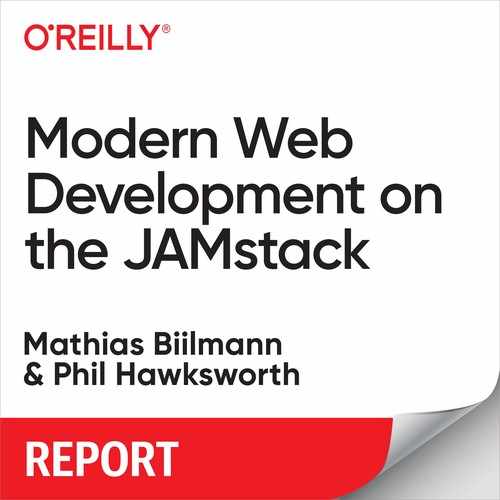Chapter 7. Conclusion
And One More Thing...
When we talk about the JAMstack, it’s easy to drill into the advantages that it has for us as developers and the projects we build. But there’s something larger at stake that the JAMstack addresses, and we’d be remiss not to discuss it here.
The JAMstack is a response to some of the most urgent threats to the web. But first, a quick history lesson.
When the iPhone was brand new and Steve Jobs was busy killing off Flash, HTML5 applications were meant to be the main delivery mechanism for all third-party applications on the Apple ecosystem. Jobs wrote in his famous open letter to Adobe:
Adobe’s Flash products are 100% proprietary. They are only available from Adobe, and Adobe has sole authority as to their future enhancement, pricing, etc. While Adobe’s Flash products are widely available, this does not mean they are open, since they are controlled entirely by Adobe and available only from Adobe. By almost any definition, Flash is a closed system.
Apple has many proprietary products too. Though the operating system for the iPhone, iPod and iPad is proprietary, we strongly believe that all standards pertaining to the web should be open. Rather than use Flash, Apple has adopted HTML5, CSS and JavaScript – all open standards. Apple’s mobile devices all ship with high performance, low power implementations of these open standards. HTML5, the new web standard that has been adopted by Apple, Google and many others, lets web developers create advanced graphics, typography, animations and transitions without relying on third party browser plug-ins (like Flash). HTML5 is completely open and controlled by a standards committee, of which Apple is a member.
However, web applications at the time lacked the performance and user experience needed to drive the new mobile development system. Ironically, Apple ended up with a proprietary ecosystem for which it was the sole gatekeeper.
Still, the web is the one place where anyone can have the freedom and ability to publish to a global audience in an instant—without asking anyone for permission. But if the web fails to deliver on performance, fails to provide suitable security, or fails to deliver a high enough quality user experience, it will eventually lose out to walled gardens with strict corporate gatekeepers.
Large companies are aware of the impact such things have on them, and the benefits that good performance can have on their customers. We are already seeing companies such as Google and Facebook tackle this challenge by introducing their own technologies like Accelerated Mobile Pages (AMP) and Instant Articles to deliver better performance and security, but at the cost of driving publishers to create content within the boundaries of these organizations rather than in the commons of the open web.
Solving the performance, security, and scaling issues of the legacy web while building responsive and engaging user interfaces that can truly delight the people using them is vital to keeping the web competitive, alive, and in good health.
The JAMstack is up for the challenge, providing a set of architectural practices, constraints, and guidelines that aims to make the web faster, safer, and simpler.
